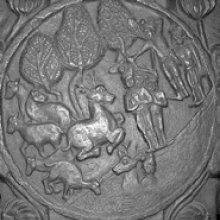Ruru: 25 definitions
Introduction:
Ruru means something in Buddhism, Pali, Hinduism, Sanskrit. If you want to know the exact meaning, history, etymology or English translation of this term then check out the descriptions on this page. Add your comment or reference to a book if you want to contribute to this summary article.
Images (photo gallery)
In Hinduism
Ayurveda (science of life)
Source: Wisdom Library: Āyurveda and botanyRuru (रुरु) is a Sanskrit word referring to the animal “deer”. The meat of this animal is part of the māṃsavarga (‘group of flesh’), which is used throughout Ayurvedic literature. The animal Ruru is part of the sub-group named Ānupamṛga, refering to animals “who live in marshy land”. It was classified by Caraka in his Carakasaṃhitā sūtrasthāna (chapter 27), a classical Ayurvedic work. Caraka defined such groups (vargas) based on the dietic properties of the substance.
Source: archive.org: Sushruta samhita, Volume IRuru (रुरु)—Sanskrit word for the animal “barasingha” (Cervus duvauceli) or “rum” (an animal of the deer species which casts its antlers and wanders roaming about in the forests in autumn). This animal is from the group called Kūlacara (‘shore-dwellers’). Kūlacara itself is a sub-group of the group of animals known as Ānupa (those that frequent marshy places).
The flesh of the Ruru is slightly sweet and leaves an astringent after taste. It is heavy, spermatopoietic and pacifies the Vāyu and Kapham.
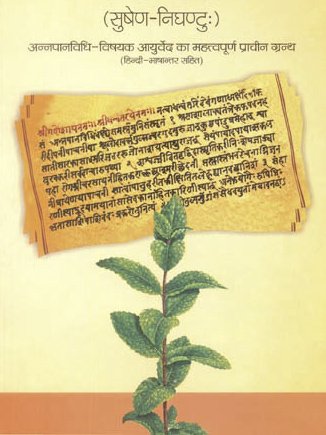
Āyurveda (आयुर्वेद, ayurveda) is a branch of Indian science dealing with medicine, herbalism, taxology, anatomy, surgery, alchemy and related topics. Traditional practice of Āyurveda in ancient India dates back to at least the first millenium BC. Literature is commonly written in Sanskrit using various poetic metres.
Purana and Itihasa (epic history)
Source: Wisdom Library: Varāha-purāṇaRuru (रुरु) is the name of an asura king who terrorised the gods (devas), according to the Varāhapurāṇa chapter 96. Ruru was eventually defeated by Raudrī who struck him and severed his head (muṇḍa) from his trunk (carma). Raudrī is the form of Trikalā having a black body representing the energy of Maheśvara (Śiva). Trikalā is the name of a Goddess born from the combined looks of Brahmā, Viṣṇu and Maheśvara (Śiva).
The Varāhapurāṇa is categorised as a Mahāpurāṇa, and was originally composed of 24,000 metrical verses, possibly originating from before the 10th century. It is composed of two parts and Sūta is the main narrator.
Source: Google Books: Know the PuranasRuru (रुरु).—There was another demon named Ruru who wanted to marry Pārvatī. He did such an unimaginable tapasya that everything started burning. Even Śiva and Pārvatī had to run. Pārvatī told Śiva to do something; Śiva replied that only she had to find a way out. She saw a lion fighting an elephant. She killed the lion and put on its skin as clothing, smeared with its blood and her appearance was terrible. Then she went to Ruru and asked him to stop meditating as he was doing it for her only. Ruru did not believe it and struck her with a mace. Terrible fight ensued. Śaktis started eating up the demons. Ruru fled but Pārvatī pursued him wherever he fled, caught hold of him and tore his head with her nails. Thus he got killed.
Source: archive.org: Puranic Encyclopedia1) Ruru (रुरु).—A hermit famous in the Purāṇas.
Genealogy. Descended from Viṣṇu in the following order: Brahmā-Bhṛgu-Cyavana-Pramati-Ruru. (See full article at Story of Ruru from the Puranic encyclopaedia by Vettam Mani)
2) Ruru (रुरु).—A mighty and valiant Asura. After procuring a boon from Brahmā, Ruru became arrogant and attacked the realm of gods. The Devas who were defeated by Ruru ran to the Blue mountain and prostrated before the goddess Śakti, who had been doing penance there. This goddess Śakti had been born from the matted hair of Śiva.
2) Ruru followed the Devas and reached the Blue mountain. When Devī saw Ruru and his mighty army a loud laugh burst out from her. From that laugh thousands of devilish figures came into existence. They completely annihilated the army of Ruru. After this Devī killed Ruru with the nail of her toe. (Padma Purāṇa, Sṛṣṭi Khaṇḍa).
Source: Cologne Digital Sanskrit Dictionaries: The Purana Index1a) Ruru (रुरु).—A Bhairava.*
- * Brahmāṇḍa-purāṇa IV. 19. 78.
1b) A son of Cākṣuṣa Manu.*
- * Matsya-purāṇa 9. 25.
1c) A son of Ahīnaka and father of Pāriyātraka.*
- * Viṣṇu-purāṇa IV. 4. 106.
1d) Some animals, more cruel than serpents give the name of Raurava to a hell. Kravyādas form a subdivision of this class.*
- * Bhāgavata-purāṇa V. 26. 1-12.
Ruru (रुरु) is a name mentioned in the Mahābhārata (cf. ) and represents one of the many proper names used for people and places. Note: The Mahābhārata (mentioning Ruru) is a Sanskrit epic poem consisting of 100,000 ślokas (metrical verses) and is over 2000 years old.
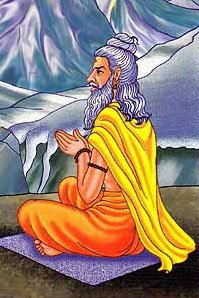
The Purana (पुराण, purāṇas) refers to Sanskrit literature preserving ancient India’s vast cultural history, including historical legends, religious ceremonies, various arts and sciences. The eighteen mahapuranas total over 400,000 shlokas (metrical couplets) and date to at least several centuries BCE.
Shilpashastra (iconography)
Source: Wisdom Library: Śilpa-śāstraRuru (रुरु) is the Sanskrit name of a form of Bhairava. According to the Rudrayāmala, there are eight main forms of Bhairava who control the eight directions of this universe. The term is used throughout Śilpaśāstra literature.
Ruru has the following eight manifestations:
- Ruru,
- Kroḍadaṃṣṭra,
- Jaṭādhara,
- Viśvarūpa,
- Virūpākṣa,
- Nānārūpadhara,
- Vajrahasta,
- Mahākāya.
All these have a pure white color; they should be adorned with ornaments set with rubies and should carry an akṣamālā, the aṅkuśa, a pustaka and a vīṇā.
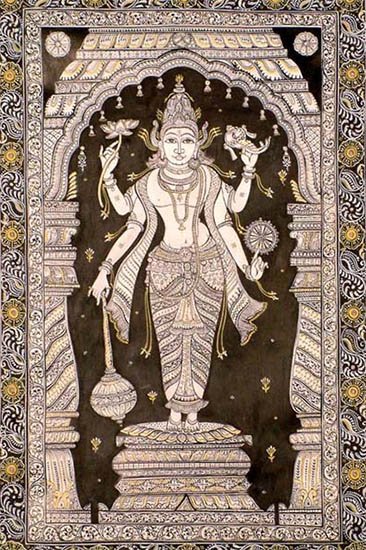
Shilpashastra (शिल्पशास्त्र, śilpaśāstra) represents the ancient Indian science (shastra) of creative arts (shilpa) such as sculpture, iconography and painting. Closely related to Vastushastra (architecture), they often share the same literature.
Kavya (poetry)
Source: Wisdom Library: KathāsaritsāgaraRuru (रुरु) is the name of a hermit who, while wandering around at will, got married to Priṣaḍvarā (also named Pramadvarā), the daughter of the apsara named Menakā’s, according to the Kathāsaritsāgara, chapter 14. Their story is told by Vasantaka to queen Vāsavadattā after being released from prison.
The Kathāsaritsāgara (‘ocean of streams of story’), mentioning Ruru, is a famous Sanskrit epic story revolving around prince Naravāhanadatta and his quest to become the emperor of the vidyādharas (celestial beings). The work is said to have been an adaptation of Guṇāḍhya’s Bṛhatkathā consisting of 100,000 verses, which in turn is part of a larger work containing 700,000 verses.
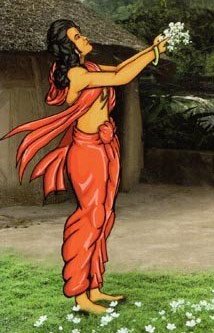
Kavya (काव्य, kavya) refers to Sanskrit poetry, a popular ancient Indian tradition of literature. There have been many Sanskrit poets over the ages, hailing from ancient India and beyond. This topic includes mahakavya, or ‘epic poetry’ and natya, or ‘dramatic poetry’.
Dharmashastra (religious law)
Source: Prācyā: Animals and animal products as reflected in Smṛti textsRuru (रुरु) (or Raṅku, Gokarṇa, Eṇa) refers to the animal “Nilgai [Blue bull]” (Boselaphus tragocamelus).—The Smṛtis mention several domestic as well as wild animals that are enumerated in context of specifying expiation for killing them, the flesh being used as a dietary article to give satisfaction to the Manes (Pitṛs) in Śrāddha rites, the law of transmigration due to various sins committed as well as in the context of specifying gifts to be given on various occasions. These animals [viz., Ruru] are chiefly mentioned in the Manusmṛti, Parāśarasmṛti [Chap.6], Gautamasmṛti [17.2 and 15.1], Śātātapasmṛti [II.45-54], Uśānasmṛti [IX.7-9; IX.12-13], Yājñavalkyasmṛti [I.170-171; I.175; I.258- 260], Viṣṇusmṛti [51.3;51.6;51.26;51.33;80.3-14], Uttarāṅgirasasmṛti [X.15-17], Prajāpatismṛti [Śrāddhatyājyavastuvarṇanam. 138-143], 9 Kāśyapasmṛti [Section on Prāyaścittavarṇanam], Vṛddha Hārītasmṛti [6.253-255] and Kātyāyanasmṛti [27.11].
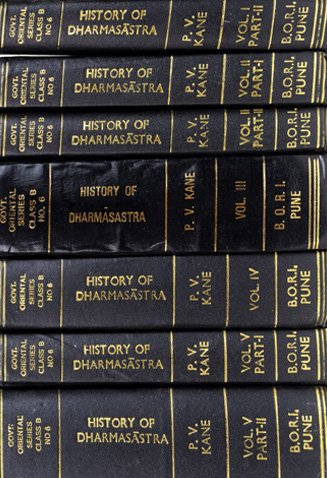
Dharmashastra (धर्मशास्त्र, dharmaśāstra) contains the instructions (shastra) regarding religious conduct of livelihood (dharma), ceremonies, jurisprudence (study of law) and more. It is categorized as smriti, an important and authoritative selection of books dealing with the Hindu lifestyle.
Shaktism (Shakta philosophy)
Source: Google Books: Manthanabhairavatantram1) Ruru (रुरु) is the name of a demon appearing in the nineteenth Kalpa (aeon), according to the Kularatnoddyota (chapter 9).—Accordingly: “There will be one named Ruru, king of the demons and very powerful. You will be on the path (of the world) at the end of the Mahākalpa in order to slay him. O mother of the universe, you who are forgiving and (yet) very fierce, Mahāmāyā and extremely powerful, you will destroy him. Accompanied by Mahābhairava and worshipped by the great host of mothers (mātṛ), you will be united to the one who is the god of all as (your) husband in the eighteenth aeon”.
2) Ruru (रुरु) refers to one of the eight Bhairavas associated with Jālandhara (which is in the southern quarter), according to the Manthānabhairavatantra, a vast sprawling work that belongs to a corpus of Tantric texts concerned with the worship of the goddess Kubjikā.—[...] The eight Bhairavas: Ruru, Kāla, Bahurūpa, Pracaṇḍaka, Tryambaka, Tripurānta, Ūrdhvakeśa, Aghora.
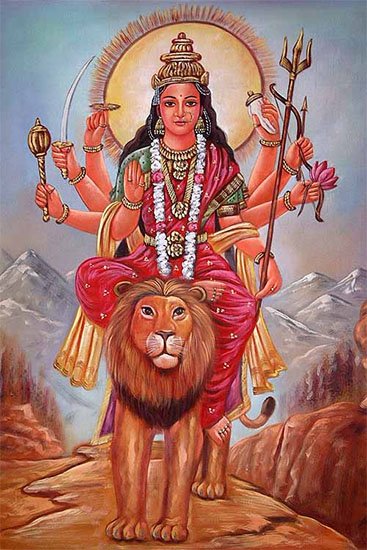
Shakta (शाक्त, śākta) or Shaktism (śāktism) represents a tradition of Hinduism where the Goddess (Devi) is revered and worshipped. Shakta literature includes a range of scriptures, including various Agamas and Tantras, although its roots may be traced back to the Vedas.
Sports, Arts and Entertainment (wordly enjoyments)
Source: archive.org: Syainika Sastra of Rudradeva with English Translation (art)Ruru (रुरु) refers to “deer” (which were commonly the victim of hunters), according to the Śyainika-śāstra: a Sanskrit treatise dealing with the divisions and benefits of Hunting and Hawking, written by Rājā Rudradeva (or Candradeva) in possibly the 13th century.—Accordingly, “Hunting by packs of dogs is that in which dogs are let loose at hares and other animals in arid tracts. [...] This has a subdivision named Rajvāmoka, which is employed in capturing antelopes and deer (ruru), and in which the string (lasso?) is cast. with skill. [...]”.
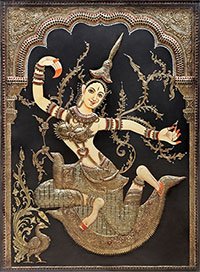
This section covers the skills and profiencies of the Kalas (“performing arts”) and Shastras (“sciences”) involving ancient Indian traditions of sports, games, arts, entertainment, love-making and other means of wordly enjoyments. Traditionally these topics were dealt with in Sanskrit treatises explaing the philosophy and the justification of enjoying the pleasures of the senses.
General definition (in Hinduism)
Source: Apam Napat: Indian MythologyRuru was the grandson of the sage Chyavana. He was the son of Pramati and Ghritachi. He was betrothed to a maiden named Pramadvara, who was the daughter of Menaka and the king of the Gandharvas (his name is not mentioned). This girl had been abandoned by her parents and had been brought up by a Rishi called Sthulakesa. (Refer to [Maha:1.8]).
In Buddhism
Tibetan Buddhism (Vajrayana or tantric Buddhism)
Source: OSU Press: Cakrasamvara SamadhiRuru (रुरु) is the name of a Bhairava deity [i.e., oṃ rurubhairavāya svāhā], according to the Vāruṇī Pūjā [i.e., Varuni Worship] ritual often performed in combination with the Cakrasaṃvara Samādhi, which refers to the primary pūjā and sādhanā practice of Newah Mahāyāna-Vajrayāna Buddhists in Nepal.
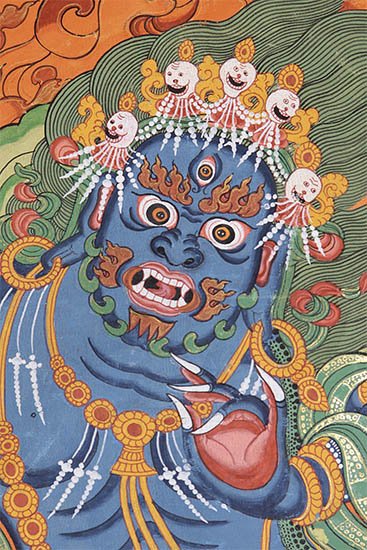
Tibetan Buddhism includes schools such as Nyingma, Kadampa, Kagyu and Gelug. Their primary canon of literature is divided in two broad categories: The Kangyur, which consists of Buddha’s words, and the Tengyur, which includes commentaries from various sources. Esotericism and tantra techniques (vajrayāna) are collected indepently.
Languages of India and abroad
Pali-English dictionary
Source: BuddhaSasana: Concise Pali-English Dictionaryruru : (m.) a kind of deer.
Source: Sutta: The Pali Text Society's Pali-English DictionaryRuru, (Vedic ruru: RV VI, 75, 15) a sort of deer, a stag; usually called ruru-miga J. IV, 256, 261; V, 406 (pl. rohitā rurū), 416. Cp. ruruva. (Page 574)
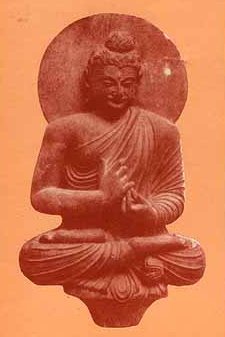
Pali is the language of the Tipiṭaka, which is the sacred canon of Theravāda Buddhism and contains much of the Buddha’s speech. Closeley related to Sanskrit, both languages are used interchangeably between religions.
Sanskrit dictionary
Source: DDSA: The practical Sanskrit-English dictionaryRuru (रुरु).—[rauti ru-krun Uṇādi-sūtra 4.113]
1) A kind of deer; विरुरुचे रुरुचेष्टितभूमिषु (viruruce ruruceṣṭitabhūmiṣu) R 9.51,72.
2) A dog.
3) A kind of savage animal; क्रव्यादा नाम रुरवः (kravyādā nāma ruravaḥ) Bhāgavata 5.26.12.
Derivable forms: ruruḥ (रुरुः).
Source: Cologne Digital Sanskrit Dictionaries: Shabda-Sagara Sanskrit-English DictionaryRuru (रुरु).—m.
(-ruḥ) 1. A sort of deer. 2. A Daitya flayed by Siva. E. ru to weep, ku aff.
Source: Cologne Digital Sanskrit Dictionaries: Benfey Sanskrit-English DictionaryRuru (रुरु).—m. A sort of deer, [Draupadīpramātha] 4, 15.
Source: Cologne Digital Sanskrit Dictionaries: Cappeller Sanskrit-English DictionaryRuru (रुरु).—[masculine] a kind of deer.
Source: Cologne Digital Sanskrit Dictionaries: Monier-Williams Sanskrit-English Dictionary1) Ruru (रुरु):—m. (cf. √1. ru, [Uṇādi-sūtra iv, 103]) a species of antelope (picta), [Vājasaneyi-saṃhitā] etc. etc.
2) a kind of savage animal, [Bhāgavata-purāṇa] (cf. raurava)
3) a dog, [cf. Lexicographers, esp. such as amarasiṃha, halāyudha, hemacandra, etc.]
4) a species of fruit tree [gana] plakṣādi
5) a form of Bhairava, [Catalogue(s)]
6) Name of a son of the Ṛṣi Pramati by the Apsaras Ghṛtācī, [Mahābhārata; Kathāsaritsāgara]
7) of a son of Ahīna-gu, [Viṣṇu-purāṇa]
8) of one of the Viśve Devāḥ, [Harivaṃśa]
9) of one of the 7 Ṛṣis under Manu Sāvarṇi (with the [patronymic] Kāśyapa), [ib.]
10) of a Dānava or Daitya (said to have been slain by Durgā), [Kathāsaritsāgara]
Source: Cologne Digital Sanskrit Dictionaries: Yates Sanskrit-English DictionaryRuru (रुरु):—(ruḥ) 2. m. A sort of deer; a demon flayed by Shiva.
[Sanskrit to German]
Sanskrit, also spelled संस्कृतम् (saṃskṛtam), is an ancient language of India commonly seen as the grandmother of the Indo-European language family (even English!). Closely allied with Prakrit and Pali, Sanskrit is more exhaustive in both grammar and terms and has the most extensive collection of literature in the world, greatly surpassing its sister-languages Greek and Latin.
Kannada-English dictionary
Source: Alar: Kannada-English corpusRuru (ರುರು):—
1) [noun] a species of antelope.
2) [noun] a dog; 3 ) a kind of savage animal.
Kannada is a Dravidian language (as opposed to the Indo-European language family) mainly spoken in the southwestern region of India.
See also (Relevant definitions)
Starts with (+4): Ruru Jataka, Rurubha, Rurubhairava, Rurucala, Rurudisha, Rurudishu, Ruruiya, Rurujit, Ruruka, Rurukshani, Rurukvas, Rurumunda, Rurunakhadharin, Ruruparicita, Ruruprishata, Rurura, Rurushirshan, Rurutkira, Rurutsa, Rurutsu.
Ends with (+9): Aruru, Beruru, Caka-muva-peruru, Caruru, Eruru, Jaruru, Kathamruru, Kiururu, Kururu, Maharuru, Mkururu, Mokaruru, Mpururu, Msungururu, Mugaururu, Mukaururu, Mukururu, Mururu, Ngweo kiruru, Niruru.
Full-text (+61): Raurava, Pramadvara, Rurushirshan, Maharuru, Bhrigunandana, Ruruprishata, Bhairava, Prishadvara, Pisha, Sthulakesha, Kravyada, Ruruvidarini, Rurunakhadharin, Rurubhairava, Rurumunda, Cera, Ruruka, Tururu, Mahadhanaka, Dvishapha.
Relevant text
Search found 42 books and stories containing Ruru; (plurals include: Rurus). You can also click to the full overview containing English textual excerpts. Below are direct links for the most relevant articles:
The Devi Bhagavata Purana (by Swami Vijñanananda)
Chapter 22 - On the narrative of the sins leading to hells < [Book 8]
Chapter 9 - On the account of Ruru < [Book 2]
Chapter 11 - On the Sarpa Yajña < [Book 2]
Mahabharata (English) (by Kisari Mohan Ganguli)
Pramadvara < [January – March, 1978]
The Concept of Hero in Aurobindonian Poetry < [July – September 1972]
Five Worthy Couples in the Mahabharata < [January – March, 1978]
Puranic encyclopaedia (by Vettam Mani)
Manusmriti with the Commentary of Medhatithi (by Ganganatha Jha)
Verse 3.269 < [Section XXI - Relative Merits of the Offering-Materials]
Verse 2.41 < [Section XIII - Initiation (upanayana)]
Verse 8.297 < [Section XLII - Assaults]
The Skanda Purana (by G. V. Tagare)
Chapter 242 - Greatness of Kumārī < [Section 1 - Prabhāsa-kṣetra-māhātmya]
Chapter 4 - Ḍamarukeśvara (ḍamaruka-īśvara-liṅga) < [Section 2 - Caturaśīti-liṅga-māhātmya]
Chapter 109 - The Greatness of Cakra Tīrtha < [Section 3 - Revā-khaṇḍa]
